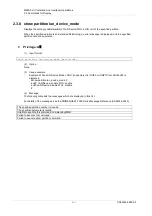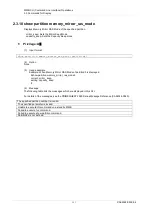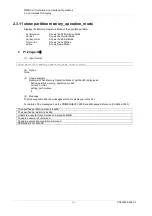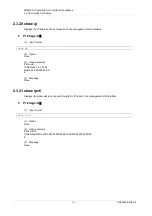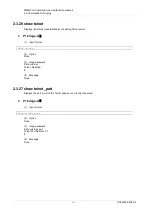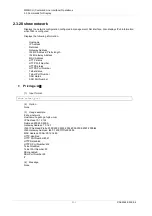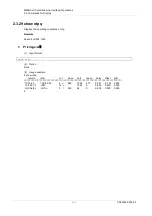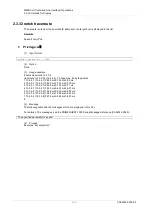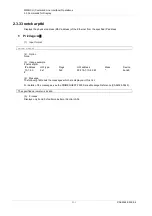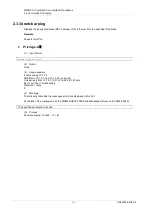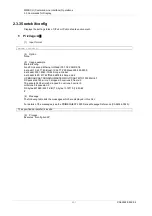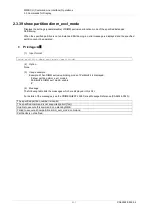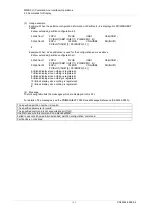
MMB CLI (Command Line Interface) Operations
2.3 Commands for Display
455
CA92344-0539-04
TABLE 2.8 Output Items of show ntpq
Item
Description
Symbols on the top of remote
Meanings of the symbols displayed on the top of a remote are listed below.
Blank: reject. It is not referred when request is not attained or the distance
is far (the period for to-fro communication to server is more than 16
seconds).
x:falsetick. The time, acquired from all other remote servers registered in
MMB, deviates (The value of jitter is deviated more than the allowance
range of deviation) as compared to the time acquired from more than
two remotes. Therefore, it was excluded from the reference list.
Falsetick cannot be detected when all the clocks are off.
-: outlyer. It is not referred because jitter value of this remote is greater than
offset of remote during the current synchronization
+: candidate. Can be synchronized any time.
#: selected. It is possible to synchronize but as the distance is far (the to-fro
communication period of the server is more than 1 second), it is
departed from candidate.
*: sys.peer. Synchronizing.
remote
Host name (“LOCAL” indicates MMB) referred as NTP Server (Server
providing internal clock to other computers trough ntp protocol).
refid
Indicates from where remote synchronizes the time. When it is not clear,
0.0.0.0.
st
A number showing the level of server. Generally, as this number gets
larger, the reliability of time gets declined.
t
Type of remote server
1: Local server. Acquisition of internal clock of MMB (This type is
considered only when remote is LOCAL).
u: Unicast server. Executes time request for the remote from MMB and
acquires the transmitted time.
when
Elapsed time from the time when packet is received for the last time from
remote. (Unit: seconds).
poll
Interval to acquire time from remote (Unit: seconds).
reach
Flag of failure and success of time acquisition of past 8 times. (Octal
numeral expression).
The result of failure and success of time acquisition of past eight times is
expressed in 8 bits (0: Failure, 1: Success) and it is octal numeral
expression. Whenever time is acquired, bits are shifted to the left, the right
most bit is the latest result of acquisition.
For example, when this value is 356(8) =11, 101, 110(2), the latest
acquisition among past eight acquisition results and fourth acquisition
failed. If the next time acquisition succeeds, the value becomes 335(8) =11,
011, 101 (2).
delay
Communication time (Unit: milliseconds) pertaining to the network round trip
for remote communication.
offset
Time deviation between a remote clock and an internal clock (Unit:
milliseconds)
jitter
The error is generated due to the time which is an addition of previously
acquired time and interval of poll, and error value of latest time which is
actually acquired (Unit: milliseconds), accuracy of respective clocks and the
network condition.
(4) Message
The following table lists the messages which are displayed in this CLI.
For details of the messages, see the PRIMEQUEST 2000 Series Message Reference (CA92344-0540).
The specified parameter is invalid.
Unable to execute this command on a standby MMB.
Failed to ntpq command.

